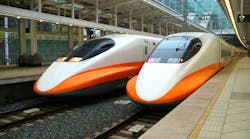Yali Shi, Dreamstime.com
Modern railway systems are experiencing increasing traffic, higher speeds, longer trains, heavier axle loads, and more trains per hour. This trend needs more powerful engines with more powerful currents flowing through electrical power lines.
More and more increasingly complex electronic systems are finding their way into modern railway systems. The railway track environment can be constantly exposed to magnetic and electric fields from trains, nearby electric transmission power lines, switches, and more. This leads to an increase in radiated and conducted EMI. More modernized railway systems with sensitive electronic circuitry are becoming more susceptible to increased electromagnetic noise at higher frequencies.
Comments
Comments
